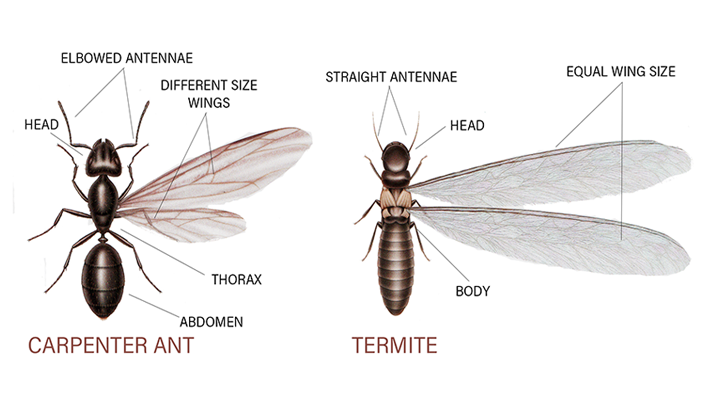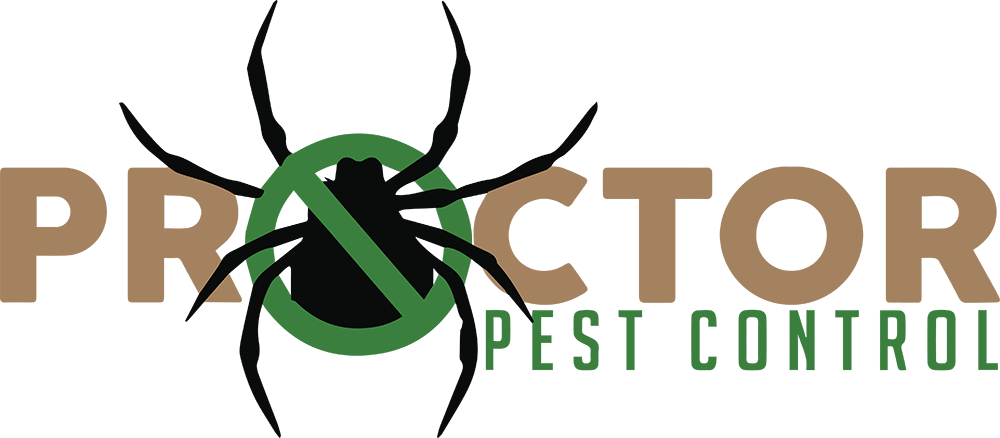
14 Jul Termites Vs. Ants: What’s The Difference?
There is nothing as frustrating as dealing with a pest infestation in the home. While there are certain species of insects that are more notable than others, many homeowners get confused by tiny winged insects they find in their home and wonder whether these insects are termites or carpenter ants.
While these bugs are inherently different, they do have a few similarities. They both love (and can damage) wood, they’re both small in size and they both swarm when they mate. So how do you tell the difference between the two?
Take a look at these facts and features to help determine what type of bug you may be dealing with, so that you can get proper treatment right away.
Physical Differences
While you may not want to get super up close and personal with the small, flying insects in your home, there are a few ways that you can physically tell these creatures apart.
Termites:
- Broad Waist
- Straight, Bead-Like Head and Straight Antennae
- Two Sets of Wings in the Same Size
Carpenter Ants:
- Narrow Waste
- Large Head with Segmented, Elbowed Antenna
- Large Forewings and Small Hind Wings
What About Swarming?
Many customers believe they have termites when they see a swarm of flying ants in their homes. However, many times, termites go completely undetected in the home until there is damage to the property or until the termite’s swarm.
Typically, termites will only swarm in the months of April and May. While this is an easy way to identify the presence of termites in the home, just because you don’t see termites swarming, it doesn’t mean that they aren’t in your home, destroying the wood in your property. The worker termites that are actually doing this damage will remain in the home and cause damage all year round.
If you are seeing winged insects flying around after May, you are most likely seeing ants.
Ants vs. Termites—Where Do They Live?
Where you see these insects can really help you determine what type of insect you are dealing with. House ants like to nest around the exterior of the home under leaves and around shrubbery. If you want to prevent these pests from nesting and ultimately getting into your home—then it is important to keep these areas clear of leaves and debris. You should also keep your trees trimmed and make sure they aren’t touching your home.
Carpenter ants are particularly active in the spring and summer, they will typically congregate around window sills or doors and leave behind a sawdust-like material. This happens when the carpenter ants tunnel into the wood grain inside your home’s walls to nest. If you have softwood where a lot of moisture builds up, look out for carpenter ants. They like to find softwood for nesting.
North Texas is home to a number of different species of carpenter ants, the most typical are either red or black and between ¼ to ½ inch in length. While they may try to nest and burrow into wood in your home, they won’t destroy the wood in your home as termites do.
If you feel as though your home may have an issue with termites or ants, then contact the experts here at Proctor Pest. We are here to answer all of your pest-related questions and will safely and carefully get rid of the unwanted critters in your home.



